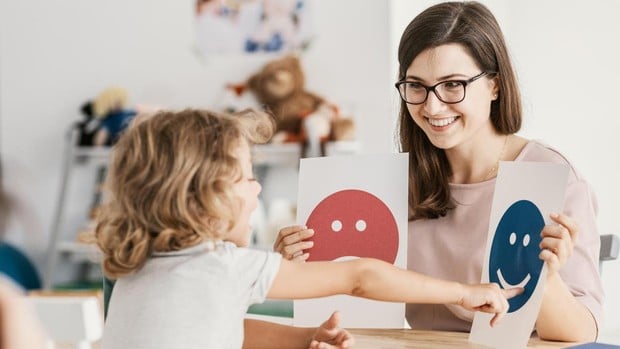Fortunately, as child education and psychology have grown over the years, we have been able to provide families and schools with endless resources to work on children's emotional education.
Below, we are going to share some of these resources that, in general, are simple and can be used at home with children so that they can learn what their emotions are, how you can get to know them and the best way to manage them optimally.
Take note of these resources to work on children's emotional education.
You will soon realize that managing emotions is much simpler than you might think. For the child to learn and internalize, games, stories, audiovisuals and many other materials are ideal to achieve excellent results.
Dictionary of emotions
From the age of two, we can create a dictionary of emotions with our children. Obviously, the child will not be able to read it at first, but there are other ways to enjoy this useful resource. For example, using photographs of the child in which he and other people, other children, characters, etc. appear. Thus, the images will be classified and we will work with our child to identify what emotions these photographs provoke, thus discovering these emotions so that he knows them from an early age.
It is convenient to start with the most primary ones, such as fear, disgust, sadness or joy. Gradually, as it develops, more complex ones can be added.
Stories
There are a huge number of stories with which to work on children's emotions. In fact, the aforementioned stories are ideal tools to work on the emotional education of children, as well as other fields and other issues such as friendship, love, solidarity, generosity, etc.
Theater of emotions
In fact, when we tell a story to a child, in a way, we are also interpreting. We tend to emphasize certain phrases, to emphasize certain words, to intone so that the child gets into the story and lives it as his own, etc.
Well, imagine something similar, but in this case with a small theater or puppet show. We can use rag or cloth characters or be ourselves the protagonists of the narration. From there, we will create a story in which the protagonists find themselves in situations in which emotions are key. For example, a child who is lost in a forest and is afraid, a man who is robbed and suffers from anger, a woman who is sad because she has lost something...
Drawings
The way children express their emotions is very important. Drawing is often key in this aspect. Even the simplest and most abstract strokes of the little ones can hide representations and moods. That is why we should encourage them to pick up pencils, crayons and markers and propose some kind of activity in which they have to express how they feel.
Music
Music is a brilliant and even necessary means of expression for human beings. As a means of artistic expression, it is commonly used to work on the emotional education of children, and also of adults. That is why we can practice, listen and see what the child feels, etc.
These 5 resources to work on children's emotional education, and many others, are available at Logos Nursery School nursery school in Las Rozas De Madrid, so that all students of our quality educational center learn to know and properly manage their emotions so that they can develop in fullness and with remarkable happiness and performance.


